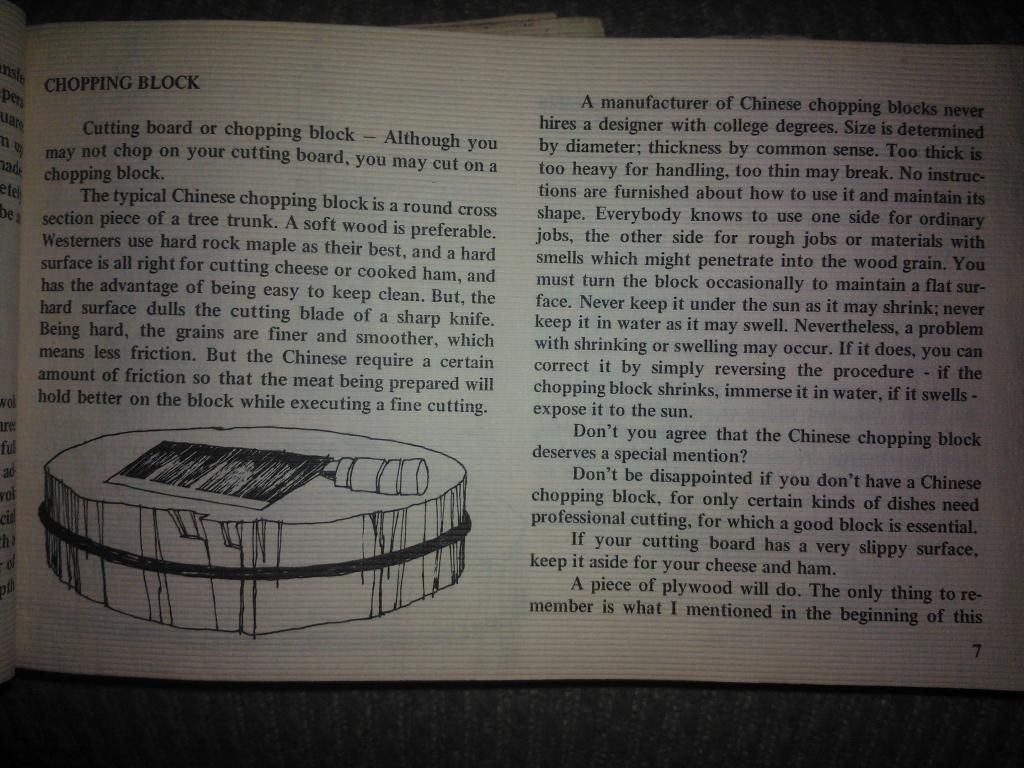Hi all
I bought this chopping board in Hong Kong a couple days ago and was wondering what people thought about the seller's advice on care and maintenance. First, here's a photo:
 [/URL][/IMG]
[/URL][/IMG]
As you can see, it's a nice looking piece of wood. It's solid but not too big, just about 28cm across and 4.5cm think, weighing between 2.5 and 3.0 kg. (Smallest size. Hey, I had to lug it onto a plane after.)
I asked 2 staff at the shop about care and their reply, basically, was to keep it wet. First, don't wash with soap or (obviously) put it in a dishwasher. Rinse it after use, they said, and use salt for cleaning and removing any smells. (Fair enough.) But more interestingly, both said to keep it moist all the time: after rinsing, cover with a wet towel - don't soak it, just cover it - and do this for at least the first month, and after that it should be 'okay'.
The more informative staff member said that if you don't do this, the whole piece will dry up and crack. I also asked if he knew about using oil or wax (thinking of mineral oil and beeswax, as people prefer here) and he said, yes, you can do that but maybe after and it's not necessary; oil wouldn't keep the board from drying and cracking and moisture was the crucial thing.
Was just wondering what the wood/board experts out there thoughy of this or if any one has experience with a similar board?
(In the photo the board is still in its plastic shrink wrapping. The advice was to do the above after first use and after unwrapping. At the shop, I noticed much larger pieces that were stored outside without plastic and kept moist - growing a bit of algae as a result.)
I bought this chopping board in Hong Kong a couple days ago and was wondering what people thought about the seller's advice on care and maintenance. First, here's a photo:

As you can see, it's a nice looking piece of wood. It's solid but not too big, just about 28cm across and 4.5cm think, weighing between 2.5 and 3.0 kg. (Smallest size. Hey, I had to lug it onto a plane after.)
I asked 2 staff at the shop about care and their reply, basically, was to keep it wet. First, don't wash with soap or (obviously) put it in a dishwasher. Rinse it after use, they said, and use salt for cleaning and removing any smells. (Fair enough.) But more interestingly, both said to keep it moist all the time: after rinsing, cover with a wet towel - don't soak it, just cover it - and do this for at least the first month, and after that it should be 'okay'.
The more informative staff member said that if you don't do this, the whole piece will dry up and crack. I also asked if he knew about using oil or wax (thinking of mineral oil and beeswax, as people prefer here) and he said, yes, you can do that but maybe after and it's not necessary; oil wouldn't keep the board from drying and cracking and moisture was the crucial thing.
Was just wondering what the wood/board experts out there thoughy of this or if any one has experience with a similar board?
(In the photo the board is still in its plastic shrink wrapping. The advice was to do the above after first use and after unwrapping. At the shop, I noticed much larger pieces that were stored outside without plastic and kept moist - growing a bit of algae as a result.)





